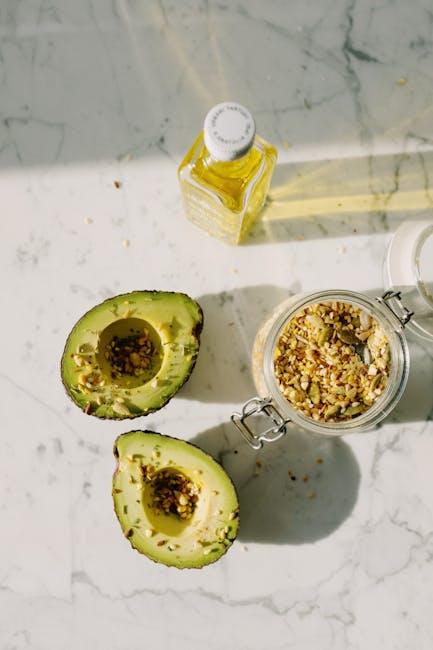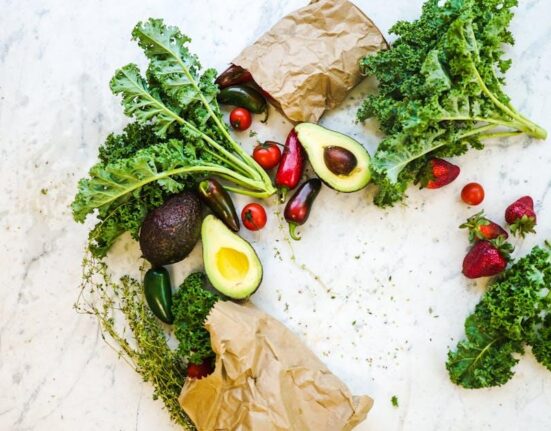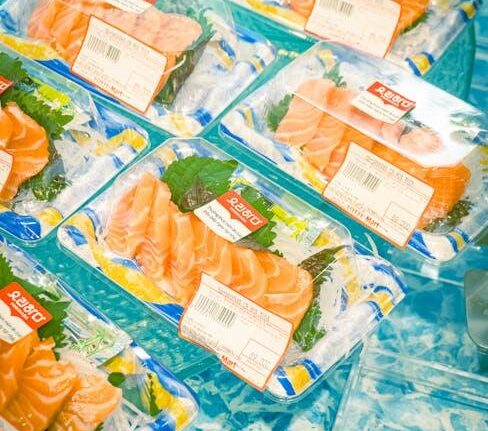Embarking on a new dietary journey can feel like stepping into uncharted territory, especially when it involves shifting the way your body fuels itself. The ketogenic diet, popularly known as the keto diet, has surged in popularity for its potential benefits, from weight management to improved mental clarity. But for beginners, the prospect of drastically cutting carbs and embracing fats can be daunting. This article aims to gently guide you through the essentials of starting the keto diet, breaking down the science, the meal planning, and practical tips to help you transition smoothly into this high-fat, low-carb lifestyle. Whether you’re curious or committed, understanding the basics will set the foundation for a successful keto experience.
Understanding the Science Behind the Keto Diet
The ketogenic diet works by shifting your body’s primary energy source from carbohydrates to fats. When carbohydrates are drastically reduced, the liver converts fat into molecules called ketones, which then become the body’s alternative fuel. This metabolic state, known as ketosis, encourages the body to burn fat more efficiently, which is why many individuals turn to keto for weight management and improved energy levels. Understanding this biochemical magic helps demystify why foods rich in fats and low in carbs become the cornerstone of this lifestyle, while sugary and starchy foods are minimized.
It’s fascinating how the body adapts to this state. Initially, many may experience symptoms like fatigue or “keto flu” as the metabolism recalibrates, but these usually subside once full ketosis is achieved. Maintaining the correct macronutrient ratios is critical—typically 70-75% fat, 20-25% protein, and 5-10% carbohydrates. Here’s a quick snapshot of typical keto macros:
| Macronutrient | Percentage (%) | Role in Keto |
|---|---|---|
| Fat | 70-75 | Main energy source, promotes satiety |
| Protein | 20-25 | Preserves muscle mass |
| Carbohydrates | 5-10 | Minimal intake to maintain ketosis |
- Healthy fats: avocado, nuts, olive oil
- Protein sources: meat, fish, eggs
- Low-carb vegetables: leafy greens, broccoli, zucchini

Essential Foods to Embrace and Avoid on Keto
When navigating the keto lifestyle, choosing the right foods can make all the difference in maintaining ketosis and fueling your body efficiently. Focus on high-quality fats such as avocado, olive oil, and coconut oil, which provide sustained energy and support brain function. Incorporate moderate amounts of protein from sources like fatty fish, eggs, and grass-fed meats to preserve muscle while keeping carb intake low. Don’t forget about fiber-rich, low-carb vegetables like spinach, cauliflower, and zucchini—they add crucial vitamins and minerals without busting your carb limit.
Conversely, some foods can disrupt your progress and stall ketosis. It’s best to steer clear of anything with hidden sugars or excess carbohydrates, such as bread, pasta, and starchy root vegetables like potatoes and carrots. Sweetened beverages and most fruits can also spike blood sugar and kick you out of ketosis quickly. Use this handy guide below to distinguish between keto-friendly and keto-avoid foods with ease:
| Keto-Friendly Foods | Foods to Avoid |
|---|---|
| Avocado & Olives | Bread & Pasta |
| Fatty Fish | Sweetened Drinks |
| Eggs & Cheese | Potatoes & Corn |
| Leafy Greens | Most Fruits |

Crafting Your Personalized Keto Meal Plan
Designing a meal plan that suits your unique lifestyle and taste preferences is essential to unlocking the full benefits of ketosis. Start by prioritizing high-quality fats like avocado, olive oil, and grass-fed butter while ensuring adequate protein intake with sources such as chicken, fish, and eggs. Remember, the calorie ratio for a ketogenic diet typically hovers around 70-75% fats, 20-25% proteins, and 5-10% carbs. Customizing these proportions based on your activity levels and goals will make the transition smoother and more sustainable.
Meal prepping can be a lifesaver in maintaining consistency. Incorporate a variety of low-carb vegetables and snacks to keep your palate satisfied and prevent burnout. Here’s a simplified example of a weekly plan breakdown to get you started:
| Meal | Key Ingredients | Macros (approx.) |
|---|---|---|
| Breakfast | Scrambled eggs, spinach, avocado | 70% Fat, 25% Protein, 5% Carbs |
| Lunch | Grilled chicken, mixed greens, olive oil | 75% Fat, 20% Protein, 5% Carbs |
| Dinner | Salmon, asparagus, butter sauce | 70% Fat, 25% Protein, 5% Carbs |
| Snack | Almonds, cheese cubes | 80% Fat, 15% Protein, 5% Carbs |
- Stay hydrated: Drink plenty of water and consider electrolyte supplements to balance mineral levels.
- Adjust as you go: Track your progress and tweak the plan to fit your body’s responses and energy demands.

Tips for Managing Keto Flu and Staying Energized
Adjusting to a ketogenic lifestyle may come with a temporary phase often called the “keto flu,” where you might feel fatigued, dizzy, or sluggish. Combat these symptoms by prioritizing hydration—water alone isn’t enough. Boost your intake of electrolytes like sodium, potassium, and magnesium through bone broth, leafy greens, and nuts to replenish lost minerals. Additionally, incorporate light physical activity such as walking or stretching to stimulate circulation without overtaxing your energy reserves.
To sustain energy throughout your day, focus on eating nutrient-dense, high-fat meals that keep blood sugar stable. Here are some practical strategies:
- Schedule regular meals: Avoid extended fasting periods until your body adapts.
- Snack smart: Prepare easy-to-grab keto-friendly snacks like cheese cubes or avocado slices.
- Prioritize quality sleep: Proper rest is essential for energy restoration and metabolic adjustment.
| Symptom | Quick Fix | Recommended Foods |
|---|---|---|
| Fatigue | Hydration & Electrolytes | Spinach, Avocado, Nuts |
| Dizziness | Salt Intake | Bone Broth, Pickles |
| Headaches | Magnesium Supplement | Almonds, Dark Chocolate |

Tracking Progress and Adjusting Your Keto Lifestyle
Monitoring your journey is essential to successfully embracing the keto lifestyle. Keeping a journal or using a digital app to log your meals, macros, and daily habits helps you notice subtle changes and patterns. Don’t just track your weight; include energy levels, sleep quality, and mental clarity. These qualitative aspects often reveal how well your body adapts to ketosis beyond the scale. Periodically testing ketone levels through breath, urine, or blood tests can give tangible feedback on your metabolic state, empowering you to make informed adjustments.
Adjusting your approach is a natural part of fine-tuning keto for your body’s unique rhythm. If progress stalls or you experience undesirable symptoms such as persistent fatigue or digestive issues, consider tweaking your fat-to-protein ratio or experimenting with different food sources. Here’s a quick reference table to guide basic modifications:
| Issue | Possible Adjustment | Tip |
|---|---|---|
| Low Energy | Increase healthy fats | Use avocado, nuts, or MCT oil |
| Digestive Upset | Add more fiber | Include leafy greens & flaxseed |
| Plateau | Adjust protein intake | Balance between 20-25% calories |
- Be patient—adaptation is a process, not an event.
- Celebrate non-scale victories like improved mood and stamina.
- Consult with a healthcare professional for personalized advice.
Q&A
Q&A: How to Start the Keto Diet for Beginners
Q1: What exactly is the keto diet?
A1: The keto diet is a low-carb, high-fat eating plan that shifts your body into a state called ketosis. In ketosis, your body burns fat for fuel instead of carbohydrates, which can help with weight loss and improved energy levels.
Q2: How do I know if the keto diet is right for me?
A2: The keto diet can be effective for many people, but it’s not a one-size-fits-all solution. Consider your health goals, current medical conditions, and lifestyle. Consulting a healthcare professional before starting is always a wise move.
Q3: What are the basic foods I should eat on keto?
A3: Focus on high-quality fats (like avocados, olive oil, and butter), moderate amounts of protein (meat, fish, eggs), and low-carb vegetables (spinach, broccoli, zucchini). Avoid sugars, grains, and most fruits.
Q4: How do I get started without feeling overwhelmed?
A4: Begin by gradually reducing carbs rather than cutting them overnight. Plan simple meals, stay hydrated, and prepare for the “keto flu” — a common adjustment phase with temporary fatigue or headaches.
Q5: Can I still enjoy snacks and treats on keto?
A5: Absolutely! There are plenty of keto-friendly snacks like nuts, cheese, and homemade fat bombs. Just keep an eye on carb counts and avoid hidden sugars.
Q6: How long does it take to enter ketosis?
A6: For most beginners, it takes anywhere from 2 to 7 days of strict carb restriction to enter ketosis. Using keto test strips can help you monitor your progress.
Q7: What are some common mistakes to avoid?
A7: Common pitfalls include eating too much protein (which can kick you out of ketosis), neglecting electrolytes, and not planning meals ahead, which often leads to carb temptation.
Q8: Is exercise important while on keto?
A8: Exercise complements the keto diet by boosting energy, supporting weight loss, and improving overall health. Start with gentle workouts and listen to your body as it adapts.
Q9: How do I maintain the keto lifestyle long-term?
A9: Sustainability is key. Experiment with recipes, track macros, stay flexible, and most importantly, listen to your body to find what works best for you.
Q10: Where can I find more resources and support?
A10: Online keto communities, apps for tracking meals, and books by trusted nutritionists can provide guidance and motivation as you embark on your keto journey.
Future Outlook
Embarking on the keto journey may seem daunting at first, but with the right knowledge and mindset, it can become an exciting path toward better health and vitality. Remember, every great adventure begins with a single step—and in this case, that step is simply choosing to take control of your nutrition. Stay curious, stay patient, and listen closely to your body as it adjusts to this new way of eating. With time, dedication, and a little creativity in the kitchen, the keto lifestyle can transform from a challenge into a sustainable, rewarding routine. So, gear up, dive in, and let your keto journey unfold—one delicious, fat-fueled meal at a time.














Leave feedback about this